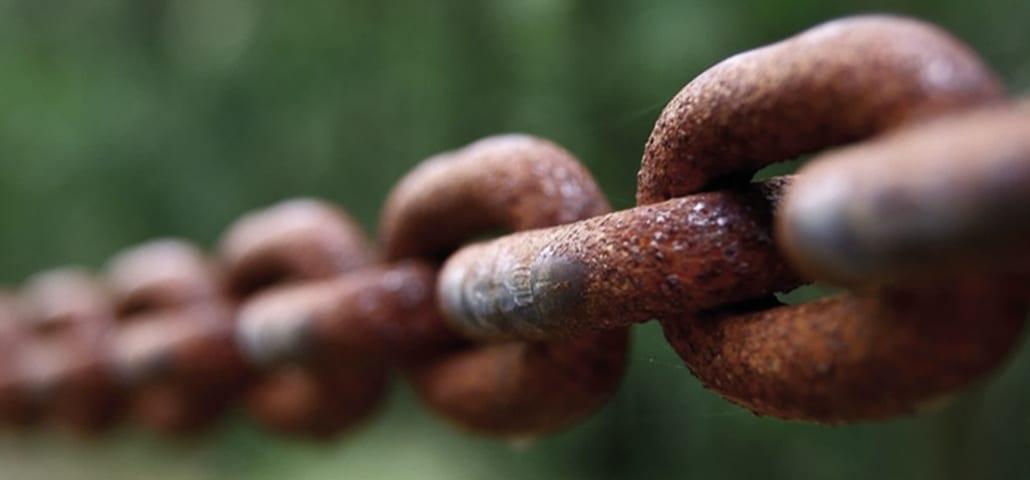
What is corrosion and why do you need corrosion test?
Basic information on the phenomenon of corrosion (process, causes and effects) and on the importance of tests.
Corrosion resistance
You would probably have seen many times metal objects with brown colour coating on them, this phenomenon is known as corrosion.
The process of corrosion is due to a chemical or electrochemical reaction, of an exposed surface with the surrounding environment that leads gradually to the material degradation. The triggering mechanism to let corrosion develop is the exposure to a chemical attack by a liquid or gas, accelerated by warm temperature, acids or salts.
The phenomenon of corrosion is usually referred to the decay of metals but almost all materials are subject to degradation and the level of pollution can nowadays accelerate this process. Corrosion can damage buildings, machines or public utilities and can become very costly to repair...but the cost is not just financial!
CORROSION PROCESS AND CAUSES
Basically, corrosion is a chemical or electrochemical reaction of a material with its environment resulting in the degradation of the material and loss of its initial features. It is a natural and irreversible phenomenon.
Which factors bring metals to corrode?
When metals come to contact with an electrolyte containing dissolved reactive substances, such as water (water is never present in pure form, gases and salts dissolved in water helps corrosion), 2 metals’ electrons flow away to the cathodic area of the metal where they react with oxygen and start forming rust.
The above example shows that oxygen is one of the main elements for corrosion to take place; indeed, at ambient temperature, the moisture we can find in the air is enough to start corrosion.
The other main elements is water that can come in contact with parts subjected to corrosion through immersion, capillarity or condensation. But there are also other factors that can ease the corrosion process:
- Alkalinity or acidity of the conductive element (salts and acids accelerate corrosion)
- Stability of the product affected by corrosion
- Bacteria (bacteria colonies increase the oxygen concentration)
- Temperature
EFFECT OF CORROSION
We are used to deal with “rust” to describe the corrosion of iron or steel, as metals can corrode easily; but these are not the only materials that suffer the effect of corrosion. Corrosion can attack also non-metallic materials such as concrete and plastics.
Let’s see which could be the disadvantages…
On metals, corrosion reduces the efficiency of the metallic equipment leading to one of the possible following effects:
- blockage or mechanical damage of pipes
- loss of mechanical properties (e.g. on metallic bridges)
- loss of efficiency
- pollution due to release of particles from corrosion
On structures (buildings, bridges…), corrosion is not just a matter of durability as it can directly affect mechanical and structural properties of components and the global response of the structure.
In particular when corrosion attack concrete, it could be affected by:
- loss of srenght, corroded structures become vulnerable for design loads, it can happen in steel and reinforced concrete structures
- fatigue, the propagation of fatigue crack in structural steels can be accelerated by corrosion
- reduced bond strength, if steel corrodes it will have a surface with a poor bond with surrounding concrete
- limited ductility, which is an important factor to consider in seismic design and evaluation meaning that plastic deformation of corroded structure is limited.
This directly influence the seismic response of elements.
On polymers, we are not used to corrosion as it happens for metals; plastics, are not metallic so they corrode differently. However, plastic materials are affected by environmental degradation.
Corrosion on polymers is not easy to discover, it may happen that the material looks the same, but it can be embrittled and have lost it´s mechanical strength. Polymers that are mechanically stressed in a chemical environment can crack on the surface; cracks can then propagate into the material.
Plastics degradation consist on a change in the properties (tensile strength, colour, shape, etc.) of a polymer or polymer-based product under the influence of one or more environmental factors such as heat, light or salts, acids or alkalis chemical substances.
There is a great variety of salt spray test that a corrosion test chamber can perform, the one to be choosen depends on the application field and on the type, materials and dimension of the product to be tested.
THE COST OF CORROSION
It’s important to understand that the cost of corrosion is not just financial. Beyond the huge amount of money to repair or replace corroded or decaying structures are the indirect costs (potential hazards, natural resources and lost opportunities).
Accidents caused by corroded structures can lead to huge safety concerns, loss of life, resources, and more. Depending on the application field your industry is in, the indirect cost can be much higher than the initial investment.
In addition, we live in a world which is always more sensitive to environmental conditions and the waste of natural resources, needed to repair structures, is a contradiction to the needs of sustainable projects!
